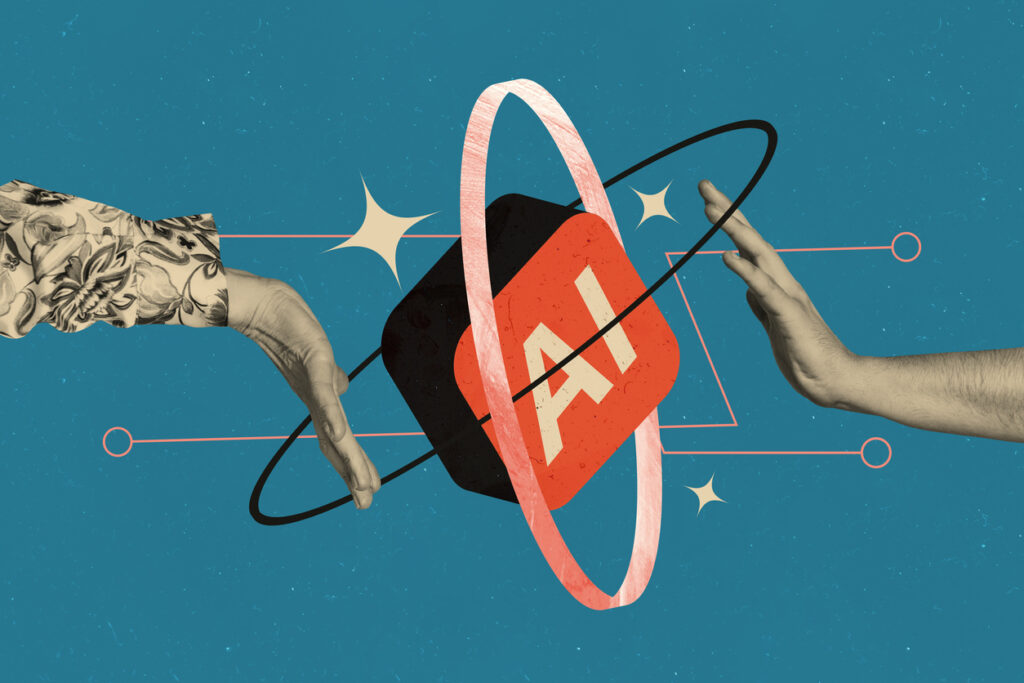The rapid rise of AI has sparked a lot of discussion about how it will enhance communication workflows. There are also questions about how internal and external communicators will work with AI on top of a myriad of already difficult tasks.
We spoke to Ayelet Noff, Global CEO and Founder of SlicedBrand and Dazzle AI. Mr. Noff spoke about the rise of technology in communications, how it can be applied to building better processes, and more.
Ragan Communications: Can you briefly tell us how you first started interacting with AI in your role at SlicedBrand and how it has evolved?
Ayelet Noff: I have specialized in the technology communications field for over 20 years and have been working with AI startups since their early days. I love watching these AI companies disrupt other industries and wonder why AI isn’t being properly leveraged to address the unique challenges faced by communications professionals. Ta.

Ayelet Noff, Global CEO and Founder of SlicedBrand and Dazzle AI
For us communications professionals, also known as humans, it is impossible to keep up with the ever-increasing number of trends, news, and channels. Over the last few years, it has become clearer that we need to embrace and leverage AI if we are to not only survive but thrive in our industry.
To be honest, I don’t think you can build a great platform in any industry if you’re from that field and don’t understand the industry inside out. To ensure that AI tools can truly meet the needs of your communications teams, you must be actively involved in their design and training. The static models that currently exist, such as ChatGPT, Claude Sonnet, Gemini, and Perplexity, are good, but they either focus on historical data or are still general-purpose models, not trained specifically for communication workflows.
What do you think communicators need to talk about but aren’t discussing enough about AI?
AN: Communications professionals need to know everything. We need to embrace and leverage AI so that we can do our jobs effectively without becoming enslaved or drowning in a never-ending sea of research.
Communicators are also at risk of providing inaccurate information and unreliable results because current communication and PR tools are not built with AI at their core and are instead littered with outdated architecture. It’s also time to recognize that you’re making the problem worse. This can strain relationships with journalists when PR teams pitch them stories that aren’t appropriate, send pitches to personal email addresses, or misspell journalists’ names.
When you first started using AI, how did you learn how to use it?
AN: I’ve been lucky to be surrounded by some of the best AI experts. Because I worked with them every day and took every opportunity to learn from them. This is also how I met the amazing team of engineers and AI experts with whom I built Dazzle.
To know how to create messages about your product, you need to use and understand it. I always needed to know as much as possible about my clients’ products, services, and the industries they serve. I’ve made it a priority to stay up to date with all the coverage and updates in this space, including listening to my favorite podcasts like The New York Times’ Hard Fork.
How is AI integrated into your role at SlicedBrand?
AN: My team and I use AI every day. My team used to spend days creating a great media list, but as the number of distribution channels grows, that time takes even longer.
Leverage different LLM models and search engines to get the most timely and accurate results By leveraging chat assistant Dazz AI during the research phase of PR and communications workflows, my team is now able to: Now you can save a huge amount of time. Building a media list. They can tell Dazz what kind of stories they’re working on and ask Dazz what they want to know to find the best journalists for the stories they’re pitching. These questions include, “What are journalists saying about the AI industry at the moment?” or “Who should I pitch my story about a health tech startup in New York?”
By letting AI do the heavy lifting and do what it does best, we can focus our time on creative work.
Have you noticed a change in your workflow or customer/stakeholder satisfaction since you started using AI and automation?
An: Of course! Previously, I spent most of my time wrestling with static databases to find the best journalists, podcasters, producers, etc. for my clients’ stories. This wasted time because the tools they were using to streamline processes were not effectively leveraging AI to keep up with the fast pace of the media industry. By relying on Dazzle’s proprietary AI to do all the research, my team has reduced the amount of time spent on time-consuming tasks that occur behind the scenes across all communications teams.
Do you have any big predictions for the use of AI in the coming years?
AN: My prediction is that once communications and PR professionals start using the right AI tools, the annoying spray-and-pray approach will end. Media professionals will now have all the information they need to make the right pitching choices at their fingertips, and their sometimes adversarial relationships with journalists (and viewers) will become more based on mutual trust and respect. will evolve into



